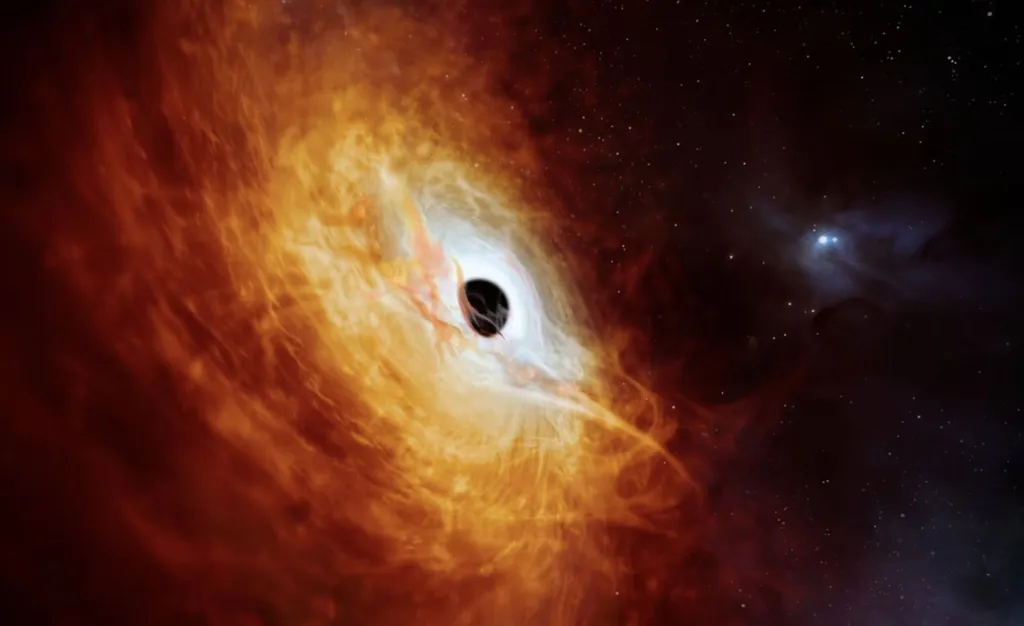In the realm of energy journalism, a recent study has delved into the fascinating world of black holes and their potential implications for energy conversion. The research team, comprising G. Mustafa, Faisal Javed, S. K. Maurya, A. Ditta, Orhan Donmez, Tayyab Naseer, Abdelmalek Bouzenada, and Farruh Atamurotov, hails from various institutions including the University of Management and Technology in Lahore, Pakistan, and the National University of Uzbekistan. Their work focuses on the motion of magnetized particles and the process of accretion around a unique type of black hole known as a “decoupled hairy black hole.”
The study, published in the journal Physical Review D, explores the efficient conversion of gravitational potential energy into radiation, a phenomenon observed in the vicinity of compact objects like black holes and neutron stars. For rapidly spinning black holes, this efficiency can reach up to 40% of the rest-mass energy of the accreting matter, surpassing the efficiency of nuclear fusion.
The researchers developed a geometric model that includes two “hairy parameters,” which maintain the structure of the black hole’s horizon while satisfying certain energy conditions outside the event horizon. This model provides a foundation for understanding the motion of magnetized particles around a decoupled black hole. The team derived the effective potential and the innermost stable circular orbits, finding that the radius of the latter decreases significantly under the influence of the hairy parameters.
Furthermore, the researchers obtained analytical expressions for radial velocity profiles and mass accretion rates. These expressions indicate improved energy efficiency and emissivity compared to standard black holes. The decoupling parameter was found to have a strong influence on oscillations and accretion, with the analytical predictions showing excellent agreement with numerical simulations. This agreement suggests noticeable observational signatures that could be detected in future gravitational wave and X-ray astronomy studies.
For the energy sector, this research highlights the extraordinary efficiency of energy conversion near black holes. While direct applications to energy production on Earth are speculative, the principles underlying these processes could inspire innovative approaches to energy conversion and harvesting in the future. The study also underscores the importance of advanced observational technologies in exploring these phenomena, which could lead to new insights and technologies beneficial to the energy industry.
This article is based on research available at arXiv.

